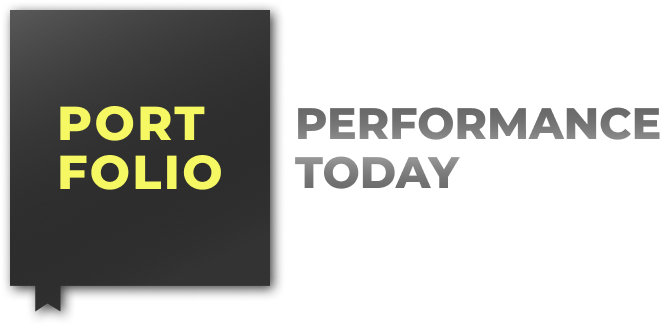Since the enactment of the Affordable Care Act (ACA), health insurance premiums have steadily increased, as has healthcare’s proportion of the gross domestic product (GDP). In employer-sponsored insurance, escalating premiums are the primary driver for stagnant take-home wages.
The structure of the Affordable Care Act (ACA) and employer-sponsored insurance conceal the true cost of healthcare. The recent government shutdown exposed this underlying flaw to public scrutiny.
Should the premium tax credits lapse as expected, the Kaiser Family Foundation (KFF) projects that premiums for Americans will increase by more than 75 percent. This stark price increase will now confront consumers, leaving patients worried and dissatisfied.
Both the ACA and employer-sponsored healthcare obscure actual healthcare costs, promoting moral hazard and distorting economic incentives.
Unraveling the Mechanics of ACA Premium Subsidies
The ACA in 2010 established premium tax credits (PTCs) to enhance the affordability of health insurance through Marketplace exchanges. These refundable credits, authorized under IRC Section 36B, reduce premiums for households with modified adjusted gross income (MAGI) at or above 100 percent of the federal poverty level ($15,650 for an individual in 2025). In 2021, enhancements increased credit amounts for existing eligible participants and extended eligibility to those exceeding 400 percent of the federal poverty level. The 2023 resolution of the “family glitch” enables dependents to access PTCs when family coverage is deemed unaffordable.
Absent congressional intervention, enhanced subsidies will expire in 2025, potentially doubling premiums and disenrolling millions, thus undermining the coverage gains championed by ACA advocates. Estimates suggest that without renewal, enrollees would face an average premium increase of $1,016 on the marketplace. The expiration of enhanced PTCs is projected to escalate annual premium costs for subsidized enrollees by 114 percent, rising from an average of $888 in 2025 to $1,904 in 2026.
In essence, the collapse of this support structure threatens the stability of the ACA’s framework. The house of cards comes crashing down.
The Hidden Challenge With Employer-Based Coverage
A Kaiser Family Foundation survey revealed that the average premium for employer-sponsored family coverage increased by 26 percent from 2020 to 2025. In 2024, the average annual cost for single coverage was $8,951, with employees typically contributing $1,368, while family coverage averaged $25,572, with employees paying $6,296.
A recent Mercer survey reported that employers expect a 6.5 percent rise in employee healthcare costs for 2026, the largest increase since 2010. Likewise, a Business Group on Health poll indicated employers anticipate a 7.6 percent surge in healthcare expenses in 2026, the most significant jump in over a decade.
Employees often remain unaware of true healthcare costs, as their contributions are partially offset by tax-advantaged employer benefits. However, these costs indirectly suppress wage growth. Meanwhile, healthcare inflation consistently outpaces general wage increases.
Conversely, insurance companies are thriving.
Since the ACA’s passage, the top five health insurers’ annual profits have soared by 230 percent. In 2024, UnitedHealth’s CEO earned $26.3 million, Cigna’s CEO $23.2 million, and others followed suit.
This dynamic does not reflect true capitalism or free-market principles but rather crony capitalism bolstered by government subsidies.
The Core Economic Problem
Imagine a pizza system mirroring healthcare. Employers subsidize 80 percent of a Supreme Pizza plan for employees, lowering the visible cost per slice to $2, though the true price is $10. Uninformed consumers add extravagant toppings — pineapple, anchovies, glitter sprinkles — perceiving them as nearly free. With numerous pizza varieties available, consumption surges. Moral hazard drives daily orders, even for breakfast pizza, escalating demand. Pizzerias, aware of this price ignorance, promote lavish new combinations. An ACA-style “PizzaCare” program caps costs at a fraction of income, encouraging excessive consumption without consideration. Prices skyrocket, benefiting pizza companies. Government subsidies intensify this distortion, further inflating costs. Employees relish their pizza; it becomes part of their daily or weekly routine. They are unaware of its true cost, but may notice and object if their pizza price component rises from $2 to $2.50 or $3.
Hayek’s Warnings and the Dependency Trap
Notably, Marketplace enrollment doubled from 11 million to 24 million following the introduction of enhanced premium tax credits in 2021.
This is Hayek’s cautionary narrative.
The critical issue lies in the vulnerability of ordinary individuals, distracted by whether Notre Dame will secure a College Football Playoff berth, the Islanders will win the Stanley Cup, or their seven-year-old will score in Saturday’s soccer game. These individuals face significant financial strain, having grown reliant on subsidies to afford healthcare. The broader healthcare system similarly depends on government support, embodying Hayek’s warning of diminishing personal autonomy and deepening entanglement with state intervention.
In The Road to Serfdom, Friedrich Hayek vividly depicts government overreach as a frog slowly boiling in a pot, lulled by promises of security. The ACA’s subsidies, like a siren call, have enticed 24.2 million enrollees with affordable premiums, obscuring the escalating true cost of healthcare. Once established, these subsidies become indispensable, with millions now dependent on them, as evidenced by projected premium spikes.
Should the enhanced subsidies, originally temporary, expire as planned in 2025, the resulting premium surge reveals the trap: dependence on state generosity. As Hayek cautioned, this reliance, cloaked in equity and justice, erodes freedom, empowering a bureaucracy to dictate government-directed winners and losers.
Once entrenched, dismantling programs initially deemed temporary becomes politically toxic. Individuals adapt to a subsidized reality, viewing affordable premiums as essential, mirroring Hayek’s portrayal of populations bound to state largesse. The ACA’s framework, with 24.2 million enrollees dependent on credits, fosters a cycle of deepening reliance. Any rollback, such as the looming 2025 expiration, risks economic disruption, entrenching a system where insurers profit from inflated costs while patients, shielded from true price signals, remain tethered to subsidies.
This validates Hayek’s thesis: centralized interventions breed dependency, eroding choice and fueling a gradual descent into serfdom.
